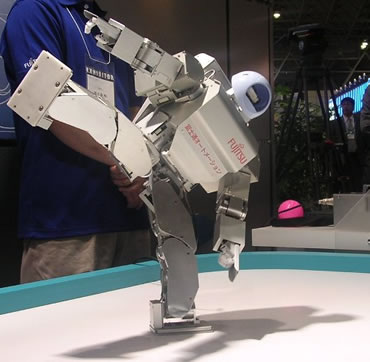Ananova - 'Emotional' robot goes on display
Story filed: 12:54 Thursday 16th October 2003
A pioneering robot capable of showing emotions is to go on public display for the first time.
The machine, called eMo, will greet and interact with visitors to Birmingham's Thinktank from October 25.
As well as expressing a range of emotions from anger to happiness, eMo is also programmed to respond to the moods of people it meets.
Visitors will be challenged to guess eMo's mood, receiving a nod and smile if they are right and an angry shake of the head if they are wrong.
eMo's has been created by Sheffield University Professor Rod Sharkey - who is best known for his role as a judge on the BBC's Robot Wars.
He hopes the robot will provide some fun, but says it could also be a serious research tool.
Prof Sharkey said: 'Such machines may one day play an important role in our lives - actually responding to our moods.
[...]





